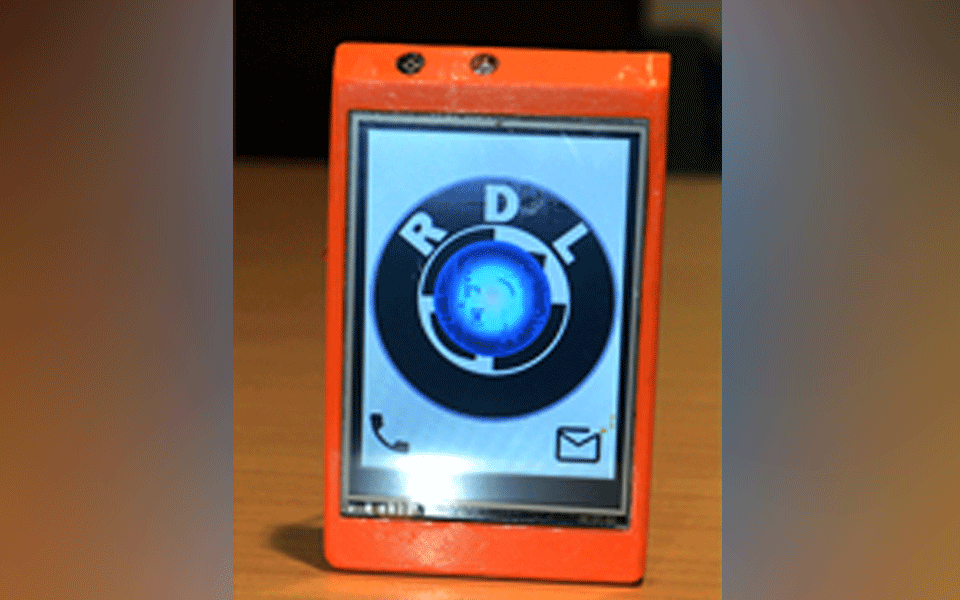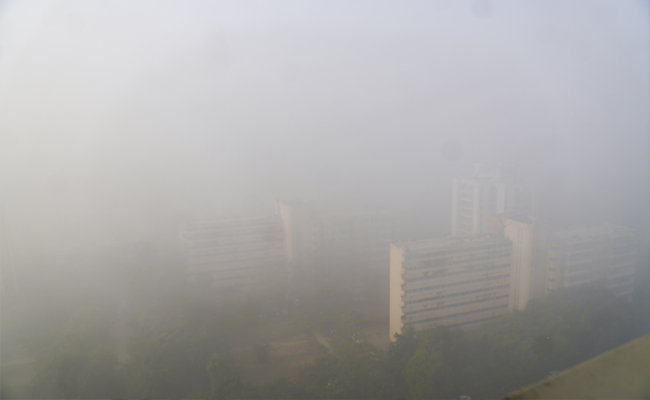Mangaluru, July 16: A team of young scientists led by Raghava Shetty of RDL Company, sponsored by Sahyadri Innovative Hub, invented a ‘Li-phone’ which works from LED light being used in house.
Speaking to reporters here on Monday, RDL Technologies Private Limited Founder Director and CEO Raghavendra G Shetty said that the Li-phone would function using the light waves of the LED bulbs. Li-phone is a simple, but invented from highly modern technology. This is different from other phones available in the market. Normally, the cell phones work through radio frequency waves. But in Li-phone would work from LED light. The phone would convert the voice or other sounds into electric signals which then transmitted through radio frequencies in the wind. The cell phone would receive such radio frequencies and reach them to the listeners. This was called radio frequency medium. The ultraviolet rays emitting from such radio frequencies would be more dangerous as they might cause dreaded diseases like cancer. The World Health Organisation (WHO) has also warned against this development. So, he has got the patent for this invention. Now, this phone was invented under the sponsorship of Sahyadri Innovation Hub and it could be used in houses and offices, he said.
The SIM card being used in mobile phones should be connected to the cellular gateway under the LED light. All calls and messages of your cell phones will appear on the screen of the Li-phone. The users could use all their cell phone works. The processing of special frequencies of LED light would convert radio frequencies into data and pass on to Li-phone. The manufacturers could use this technology in all cell phones like WiFi technology, he said.
Pradeep Kumar, Ramachandra Shetty, Kanval Karkera and others were present at the press conference.


Let the Truth be known. If you read VB and like VB, please be a VB Supporter and Help us deliver the Truth to one and all.
Kalaburagi: Two years after being expelled from the Janata Dal (Secular), former minister C.M. Ibrahim has announced that he will launch a new regional political party in Karnataka on January 24, reported Deccan Herald.
Speaking at a meeting organised by the Nava Karnataka Nirmana Andolana in Kalaburagi on Sunday, Ibrahim confirmed the birth of the new party.
The 77-year-old politician stated he would soon be meeting with other like-minded individuals to choose a symbol for the party.
ALSO READ: Veteran Congress leader Shamanuru Shivashankarappa laid to rest with full state honours
Ibrahim emphasised that the organisation would be guided by the principles of 12th-century social reformer Basavanna and the architect of the Indian Constitution, Dr. B. R. Ambedkar.
A veteran politician, Ibrahim served as Union Civil Aviation Minister during the tenure of H.D. Deve Gowda as Prime Minister and later headed the Karnataka unit of the Janata Dal (Secular). He was expelled from the JD(S) in 2023 on charges of anti-party activities.
His exit from the party followed sharp differences over the JD(S) decision to ally with the Bharatiya Janata Party (BJP). As the then state president of the JD(S), Ibrahim had publicly criticised the alliance, claiming it was finalised without his knowledge. He had also reportedly convened meetings of his supporters and expressed support for the INDIA bloc.





